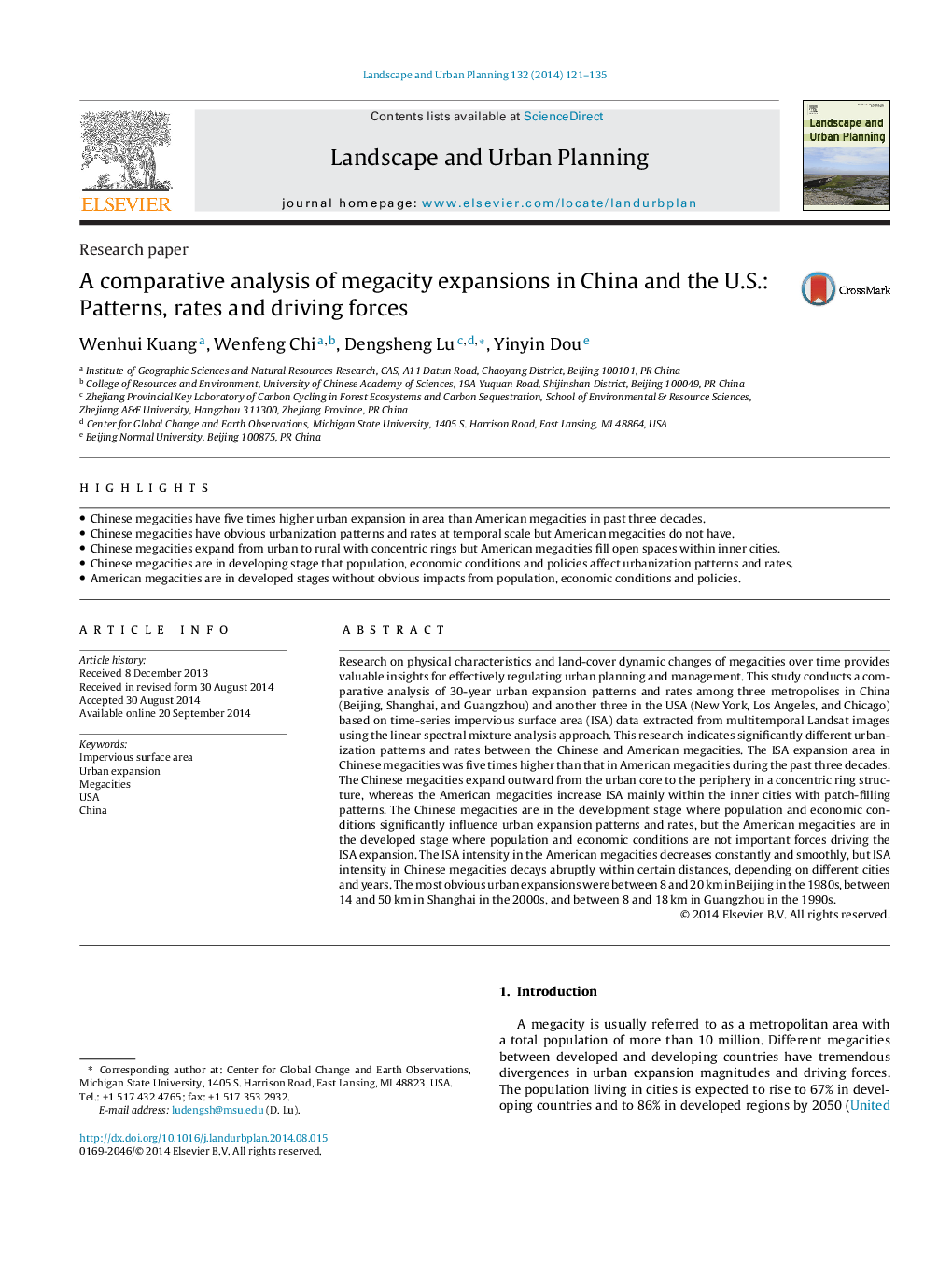| Article ID | Journal | Published Year | Pages | File Type |
|---|---|---|---|---|
| 7461290 | Landscape and Urban Planning | 2014 | 15 Pages |
Abstract
Research on physical characteristics and land-cover dynamic changes of megacities over time provides valuable insights for effectively regulating urban planning and management. This study conducts a comparative analysis of 30-year urban expansion patterns and rates among three metropolises in China (Beijing, Shanghai, and Guangzhou) and another three in the USA (New York, Los Angeles, and Chicago) based on time-series impervious surface area (ISA) data extracted from multitemporal Landsat images using the linear spectral mixture analysis approach. This research indicates significantly different urbanization patterns and rates between the Chinese and American megacities. The ISA expansion area in Chinese megacities was five times higher than that in American megacities during the past three decades. The Chinese megacities expand outward from the urban core to the periphery in a concentric ring structure, whereas the American megacities increase ISA mainly within the inner cities with patch-filling patterns. The Chinese megacities are in the development stage where population and economic conditions significantly influence urban expansion patterns and rates, but the American megacities are in the developed stage where population and economic conditions are not important forces driving the ISA expansion. The ISA intensity in the American megacities decreases constantly and smoothly, but ISA intensity in Chinese megacities decays abruptly within certain distances, depending on different cities and years. The most obvious urban expansions were between 8 and 20Â km in Beijing in the 1980s, between 14 and 50Â km in Shanghai in the 2000s, and between 8 and 18Â km in Guangzhou in the 1990s.
Related Topics
Life Sciences
Agricultural and Biological Sciences
Ecology, Evolution, Behavior and Systematics
Authors
Wenhui Kuang, Wenfeng Chi, Dengsheng Lu, Yinyin Dou,
